BY JESSE MARCOTTE
As the backbone of any fire department, ensuring that your probationary firefighter training program is comprehensive, effective, and continuously improving is crucial. It’s not just about filling positions; it’s also about cultivating the future of your organization. Probationary firefighter training programs set the bar for what we expect of our new members. These members represent not only the present but also the future.
- Probie in the Firehouse
- Maintaining a Probie Mindset: The 25-Year Probie
- 25 Things Probationary Firefighters Should Know and Do
- Setting Probationary Firefighters’ Expectations
If we seek to continuously raise the bar within our respective organizations, we must learn how to best prepare, engage, and inform our probationary firefighters. Their initiative, attitude, and performance (IAP) set the stage for what will ultimately become their legacy. How we decide to accept and shape their values, beliefs, and skill sets will become our legacy.
Fire departments are the frontline defense against various fire, rescue, and medical emergencies. The effectiveness and readiness of our departments depend heavily on the competence, skills, and dedication of our firefighters. Thus, probationary firefighter training programs are of paramount importance. These programs should aim not only to fill the gaps in staffing but also to raise the collective bar of the department, ensuring that the department consistently meets the highest standards.
This article will cover the factors that contribute to effective probationary firefighter training. This includes challenging norms, setting clear expectations, understanding the needs of the department through a comprehensive needs assessment, developing a mentoring and coaching program, and embracing feedback as a tool for continuous improvement.
Look Beyond the Maps and Mops
Just because you have always done something a certain way doesn’t mean you’re doing it the best way possible. The days of handing a new firefighter a map book and a mop bucket are long gone. Firefighters’ initial experiences as probationary members of your organization will build the foundation for their career. And while a strong work ethic is certainly important, the goal should be to maximize their time spent training with, learning from, and interacting with members of the department.
- Introduction to the Fire Academy
- Introduction to the Fire Academy: PPE, SCBA, and Ladders
- Introduction to the Fire Academy: Confined Space, Vehicle Extrication, and Live Burns
- Introduction to the Fire Academy: Hoselines, Water Supply, and Academy Graduation
Tradition Meets Innovation
As it should, tradition will continue to play a vital role in the culture of the fire service. Honor, service, integrity, and camaraderie are important aspects of fire service culture and tradition. Even so, you always have room for improvement. Identify the traditional values of the fire service you would like to maintain, and seek out opportunities to be an innovator within the framework of your probationary firefighter training program.
Departments should not seek innovation for the sake of being innovative but for the sake of leveraging every resource available to you and your department. Like many academic institutions, my department has replaced traditional learning materials with a digital tablet that contains a collection of electronic documents and task books (photo 1).
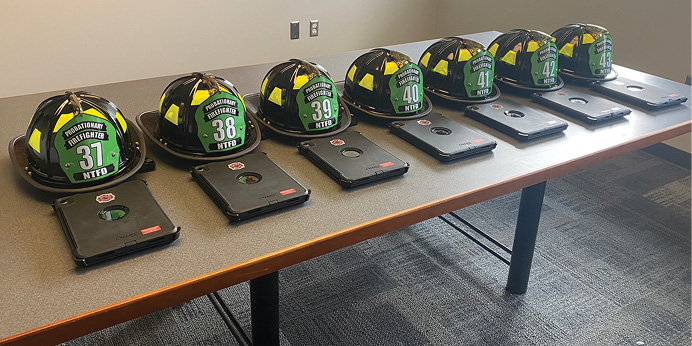
1. Photos by author unless otherwise noted.
My department did not do this just to be different. We did it in the spirit of continuous improvement. Equipping our new members with a digital tablet allows us to embed a variety of immersive documents that expand the educational resources available to them. Technology isn’t the only way to be innovative; innovation can be realized in every aspect of your organization including your culture, employee health and wellness, and operational practices.
Understanding the Needs of the Department
The best way to understand where you should go as an organization is to understand where you are in the first place. A needs assessment will serve as your road map to setting and raising the bar of your department’s probationary firefighter training program. Your department’s unique needs may range from recruitment and retention to compliance with industry standards like National Fire Protection Association (NFPA) 1010, Standard on Professional Qualifications for Firefighters (2024).
A well-executed needs assessment provides insights into the strengths and weaknesses of the department, allowing for a tailored approach to addressing these issues and improving the overall training program. The following is a simple example of a needs assessment:
Let’s say your department hires a firefighter who doesn’t know how to properly use a power tool. The goal should not be to terminate the new member immediately due to a lack of skilled trade experience. Rather, the mission should be for the department to equip the new firefighter with the cognitive and psychomotor skills he needs to effectively use a power tool.
Recruitment and Retention
A well-structured needs assessment will identify gaps and challenges in recruitment and retention. For recruitment, a needs assessment may highlight the need for targeted outreach, improved selection processes, or enhanced marketing of the department. For retention, it could reveal issues related to morale, job satisfaction, or career advancement opportunities. By addressing these challenges, a department can build a stronger foundation for the future (photo 2).
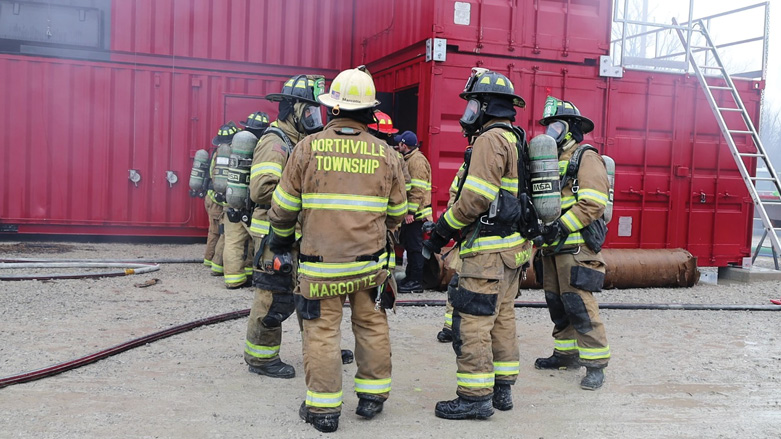
2. Photo by Jaimee Kasperlik.
A well-designed probationary firefighter training program has a unique opportunity to become an effective recruitment and retention tool. Most fire service candidates who are eager to do their best don’t seek out an organization with “average” or “mediocre” training. They are looking to be challenged by members of a department who strive for continuous improvement and consistently display credibility.
When new firefighters are introduced to an organizational culture that values training, teamwork, and camaraderie, they are much more likely to remain members of that organization. It’s important for established members to take the opportunity to introduce new members to various aspects of the department that may interest them. Perhaps they want to be part of a specialized team, assist with apparatus specifications, attend external training opportunities, or serve as an instructor within a well-defined framework.
Simply put, people seek to be valued and fulfilled. A probationary firefighter training program can accomplish both.
Compliance with Industry Standards
Meeting industry standards is not just a matter of compliance; it is a commitment to the safety and effectiveness of the department. A comprehensive needs assessment helps identify where the department might be falling short in meeting these standards. The department’s needs may include updated equipment, changes in training methodologies, or adjustments to response protocols. The needs assessment guides the department toward alignment with the highest industry benchmarks.
When you’re designing a probationary firefighter training program, it’s important to understand the following:
- Local standards.
- State standards.
- Federal standards.
- Standards outlined by organizations such as the NFPA.
- Insurance Services Office (ISO) ratings.
- Accreditation requirements.
Setting Clear Expectations: Developing Your “IAP”
The foundation of a successful probationary firefighter training program is built on clear expectations, or the notion of developing your “IAP.” This stands for initiative, attitude, and performance, which represent the primary benchmarks by which probationary firefighters are evaluated.
- Initiative. This is about encouraging proactive behavior. Probationary firefighters should be willing to take initiative in their training and daily duties. Doing so represents their readiness to step forward, problem solve, and contribute to the department’s success. Probationary firefighters who show initiative do more than become assets to their departments. They also set examples for their peers.
- Attitude. Maintaining a positive attitude is essential. Positivity not only elevates morale within the department but also contributes to teamwork and mental resilience. The firefighting profession presents constant challenges and stress, and having individuals who approach their work with a can-do attitude is vital. A positive attitude is contagious and helps create a harmonious and efficient work environment.
- Performance. The ultimate measure of a probationary firefighter’s readiness and competence, performance includes trusting the training process and putting it into action. By emphasizing the importance of training and its direct link to improved performance in real-life situations, departments can ensure that probationary firefighters are fully prepared to meet the demands of their roles.
Setting and communicating clear expectations at the outset of the probationary firefighter training program provide a road map for both the trainees and their mentors, ensuring everyone is on the same page about what success looks like (photo 3).
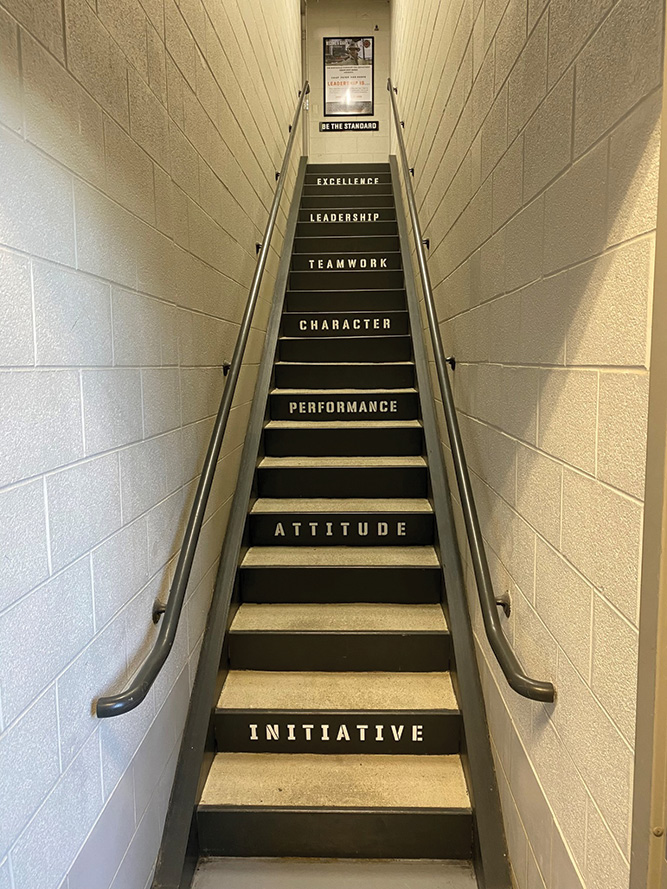
3.
Developing a Training Schedule
Effective training schedules equip probationary firefighters with the knowledge and skills they need to excel in their roles. A needs assessment can reveal deficiencies in existing training schedules, such as inadequacies in technical or soft skill training, misalignment with industry standards, or inefficiencies in time management. Developing a new, improved training schedule based on these assessments is a critical component of raising the bar for probationary firefighter training.
Implementing a Coaching and Mentoring Program
Our department has transitioned to a two-phase probationary firefighter training program: coaching and mentoring. Coaching and mentoring should be tangible, living, and irreplaceable components of your organization. When you do them well, coaching and mentoring create a force multiplier that allows us to achieve far more than traditional learning models would allow. This is not to say that simply having a formal mentoring program will make your department great. Departments need to improve and cultivate their programs over time to maximize their effectiveness.
- The Coaching Phase. Conducted on a 40-hour schedule, this phase lasts four to six weeks. The coaching phase focuses on the development of technical skills, such as fire suppression techniques, ground ladders, and search operations. Coaching is more structured and goal oriented than mentoring. It focuses on skill development and performance improvement. Coaches work with probationary firefighters to identify areas that need improvement, set specific goals, and develop action plans to achieve those goals. Coaching focuses more on achieving measurable outcomes in firefighting techniques, physical fitness, or other skills. Coaches monitor progress, provide constructive feedback, and fine-tune training plans to ensure continuous improvement.
- The Mentoring Phase. Completed using a traditional 24-hour shift schedule, the mentoring phase focuses on developing soft skills. This phase relies on senior members of the organization, who serve as a conduit to success for the probationary firefighter. The mentor plays a crucial role in helping the newcomer adapt to the department’s culture and ethos. This relationship is often more informal and focuses on imparting knowledge, wisdom, and insights gathered through years of experience. Departments vet mentors, and mentors receive additional training so they can help probationary firefighters navigate the nuances of the department, instill a sense of belonging, and facilitate a smooth transition. Their role extends beyond the technical aspects of the job to include cultural, social, and emotional aspects of becoming a firefighter within your organization.
Both mentoring and coaching are indispensable for the growth of probationary firefighters. They provide valuable support and ensure a smoother transition into the fire department. They create a sense of community and belonging, provide learning opportunities, and facilitate growth and development (photo 4).
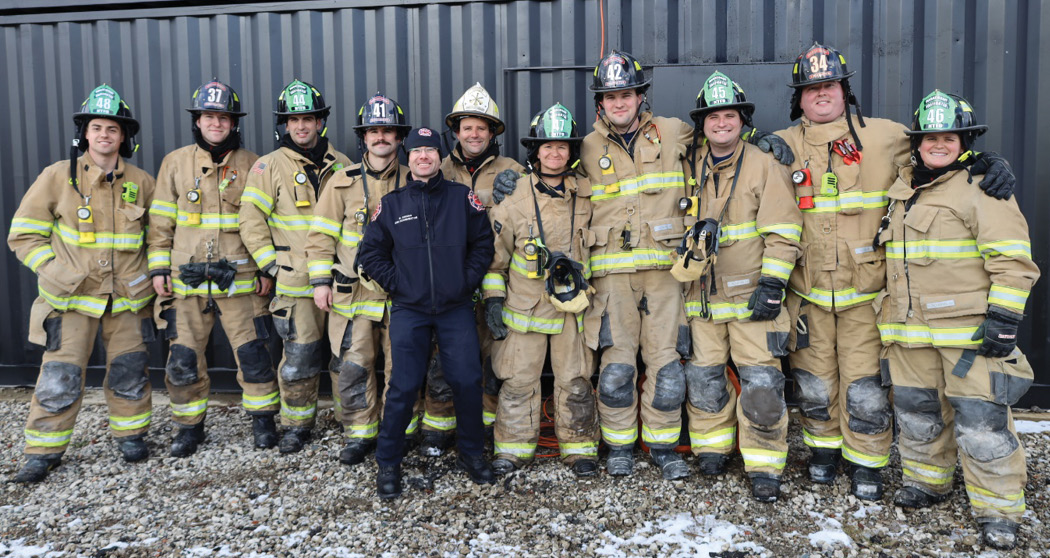
4. Photo by Jaimee Kasperlik.
Soft Skills and Adaptive Communication
While technical proficiency is essential, soft skills, such as adaptive communication and conflict resolution, are equally important and pivotal in the success of firefighters.
In the context of probationary firefighter training, adaptive communication is another key tool for mentors and coaches. Adaptive communication refers to their ability to adjust their communication style to meet the specific needs and preferences of the person or team they’re addressing.
All probationary firefighters are unique individuals with their own learning style, strengths, and areas for improvement. Adaptive communication allows mentors and coaches to tailor their guidance to the specific needs of each firefighter, enhancing their learning experience and overall development. And the importance of adaptive communication extends beyond training. Firefighters often find themselves in high-stress, fast-paced situations where effective communication can mean the difference between life and death.
Feedback
A critical element of evaluating probationary firefighters, feedback helps improve the entire training program. A comprehensive approach to feedback will include input from probationary firefighters, trainers, mentors, and experienced firefighters. Here’s how to make feedback a constructive and ongoing process:
- Encourage feedback. Create a culture that encourages and values feedback and sees it as a tool for growth. Probationary firefighters should feel comfortable providing feedback about their experiences and training; mentors, coaches, and experienced firefighters should be open to receiving it.
- Process feedback. Feedback alone is not enough; you must process and analyze it. Identify common themes and patterns in the feedback received. Are there recurring issues or concerns? Is there a consensus on areas that need improvement? This step helps in creating a structured approach to address the feedback effectively.
- Implement feedback. Once you’ve processed feedback, you can get moving. Adjust the training program, mentoring processes, or coaching methods as necessary based on the feedback you receive. Implementing feedback demonstrates a true commitment to continuous improvement and a willingness to adapt.
Evaluating the Program
The probationary firefighter shouldn’t be the only component of your program that is evaluated. To truly set and raise the bar, your department needs to assess the entire program regularly. Continuous improvement is a fundamental aspect of any successful organization, and departments must apply it to their probationary firefighter training programs. This broader evaluation should focus on the following factors and considerations:
- Curriculum and training methods. Are the training materials and methods up to date and effective? Is the curriculum aligned with industry standards and evolving best practices?
- Mentoring and coaching. Are the mentorship and coaching programs yielding the desired results? Are they aligned with the department’s goals and the needs of probationary firefighters? Are the mentors effective in their roles?
- Feedback mechanisms. How well are feedback mechanisms working? Are probationary firefighters comfortable providing feedback, and does the department effectively process feedback and respond accordingly?
- Alignment with departmental goals. Is the probationary firefighter training program in sync with the department’s broader goals? Does the program contribute to the overall success and readiness of the department?
- Adaptation to industry shifts. Is the program flexible enough to adapt to changes in firefighting techniques, emergency medical services, equipment, and best practices?
- Integration of technology. Do opportunities to integrate technology and innovative tools into the training program to enhance its effectiveness exist?
- Stakeholder involvement. How well does the program engage the stakeholders? Do opportunities for partnerships or collaboration to improve the program exist?
By evaluating the entire program, departments can ensure that the program remains dynamic and responsive to evolving needs and challenges. Continuous improvement is not only about fixing what’s broken but also about striving for excellence on every level of the program.
The Big Picture
Every fire department’s effectiveness depends on the quality of its personnel. Probationary firefighter training programs serve as the foundation on which a department’s future is built. Following these steps will enable your department to meet its staffing needs while raising the collective bar of its operations:
- Conduct a thorough needs assessment.
- Set clear expectations.
- Implement mentoring and coaching programs.
- Embrace feedback.
Firefighting requires individuals to be at their best, both technically and mentally (photo 5).
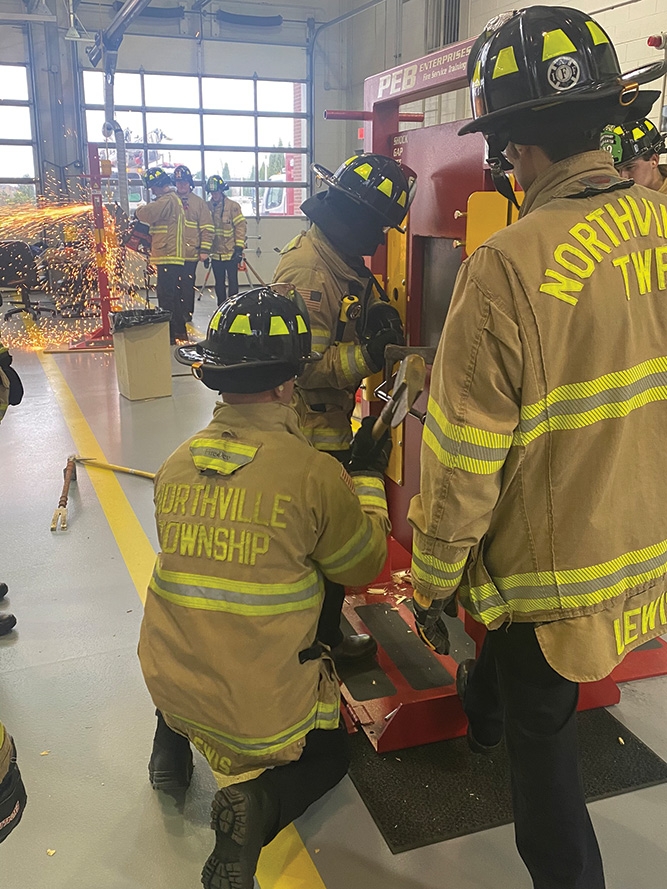
5.
Probationary firefighter training is the first step in this journey, and it’s critical to ensure that this step is as effective as possible. Doing so equips probationary firefighters with the skills they need to excel while simultaneously laying the groundwork for the continued success and growth of the department. This commitment will elevate the safety and well-being of your community.
REFERENCE
NFPA 1001, Standard for Fire Fighter Professional Qualifications (2019). bit.ly/3I8daqo.
JESSE MARCOTTE is the training chief for the Northville Township (MI) Fire Department and a senior education and training coordinator with UL FSRI. He has a master’s degree in public safety and emergency management. He serves as a board member of the ISFSI and is a lead instructor for several national hands-on trainings.
Jesse Marcotte will present “Probationary Firefighter Training Programs: Setting and Raising the Bar” at FDIC International in Indianapolis, Indiana, on Wednesday, April 17, 2024, 3:30 p.m.-5:15 p.m.

